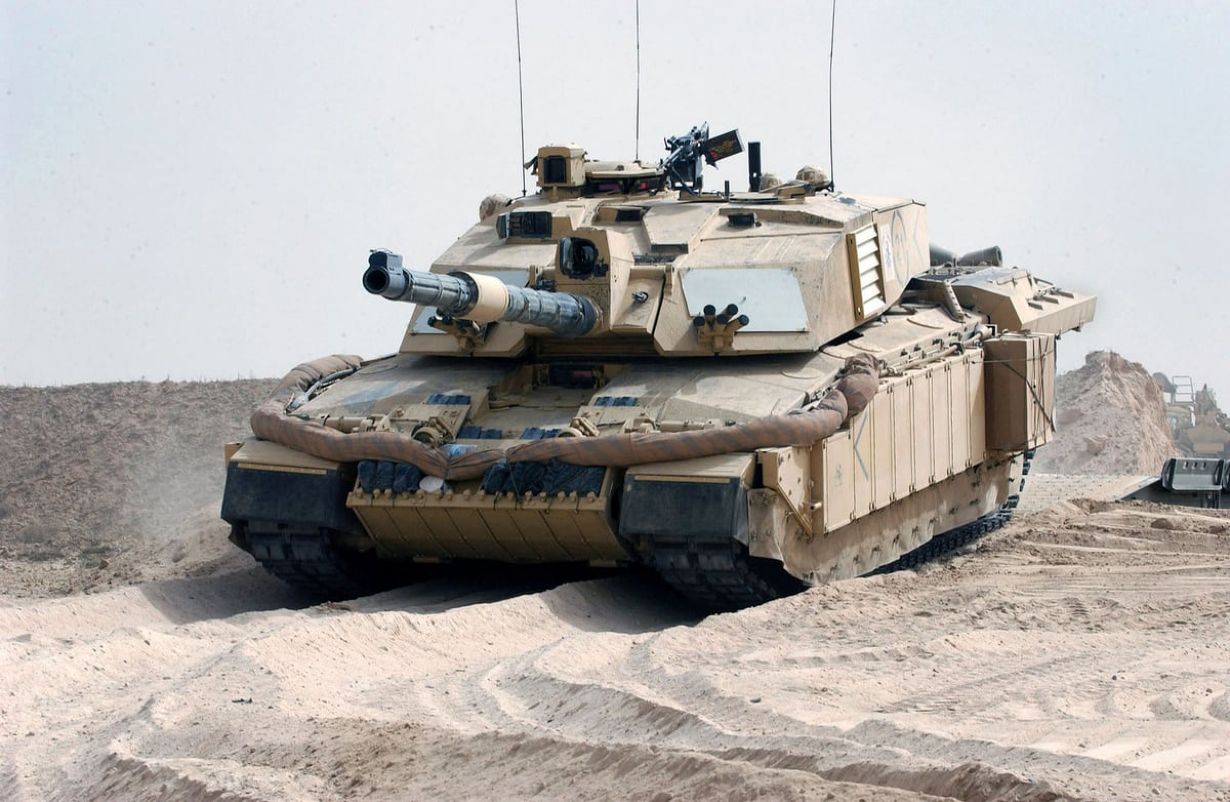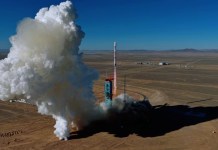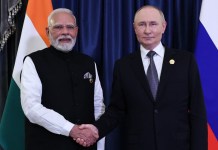Two months after they were first promised, German Leopard-2 and British Challenger-2 tanks have finally been handed over to Ukraine in a move expected to bolster Kyiv’s armored firepower significantly.
The tanks, long on Ukraine’s wishlist for military hardware, were promised to Kyiv in January. Incidentally, military watchers believe they arrived just in time for the country’s forces to launch a purported spring offensive and resist Russian advance in the eastern Ukrainian region.
German publication Der Spiegel reported on March 27 that Berlin had delivered “very modern” Leopard 2 Main battle tanks (MBTs) to Kyiv. Later, the German Defense Ministry stated that a total of 18 Leopard 2 A6 tanks had been delivered.
German Defense Minister Boris Pistorius said, “Our tanks have made it into the hands of our Ukrainian friends as promised and on time.” Berlin announced its decision to arm Ukraine with cutting-edge Leopard 2 MBTs on January 25. Subsequently, it also approved the transfer of different variants of Leopard tanks by other NATO countries that operated them.
Although this is Germany’s first delivery of Leopard 2 MBTs, these war machines from Poland’s inventory started arriving in Ukraine late last month. The first tranche of tanks was delivered to Kyiv on the first anniversary of the Russian invasion, on February 24.

Further, the German Leopard 2 tanks delivered to Ukraine are joined by the British Challenger-2 tanks this time. Ukrainian Defense Minister said in an announcement on Facebook, “A year ago, no one would have thought that our partners’ support would be so strong.”
He described inspecting a “new addition” to the nation’s Army, which included Challenger tanks, German Marder infantry fighting vehicles, American Cougar armored trucks, and Stryker armored personnel carriers.
New Western Equipment reportedly transferred to the Ukrainian Forces – including ?? Challenger 2 tanks, Stryker APCs, ?? Marder IFVs, ?? Cougar MRAP vehicles and ?? Roshel Senator armored cars.#Ukraine #Russia #UkraineRussiaWar️ #Challenger2 #Tank pic.twitter.com/6doVB2ugwB
— EurAsian Times (@THEEURASIATIMES) March 28, 2023
Earlier this month, reports in local German media suggested that the Ukrainian troops in Germany had completed their training in using Germany’s Leopard 2 and were ready to operate these tanks. The report also noted that the trained crews and their tanks would be in Ukraine in March.
As per a recent announcement by the UK Ministry of Defense (MoD), the Ukrainian troops have returned home after finishing their training on Challenger 2 tanks. This essentially means that the forces are ready to operate both NATO-style cutting-edge tanks as soon as the Army fields them.
The British MoD released a documentary showing the training imparted to Ukrainian troops by British Army officials. The ministry wrote on Twitter, “We went behind the scenes to show you how the British Army spent several weeks training Ukrainian tank crews to operate and fight with the mighty Challenger 2.
The troops traveled to the UK shortly after the announcement that the UK would send 14 Challenger 2 tanks to Ukraine. The MoD said on March 27 that the crews underwent training that covered how to effectively identify and engage targets and command, drive, and work together as a Challenger 2 tank crew.
What Can Challenger 2 Tanks Do In Ukraine?
The delivery of Challenger 2 tanks has been touted as significant as it has a strong cannon and is heavily armored. Further, it will reportedly be supplemented by 20 Bulldog armored personnel vehicles and 30 AS-90 self-propelled artillery guns.
The complete tank package has led the Russian media to contend that the British appear to be teasing that they are preparing a shock fist that is entirely built in the UK. The Challenger 2 is a third-generation MBT, the same generation as the Russian T-80 and T-90 tanks.
However, Western military commentators suggest that Challenger 2s could considerably challenge the Russian T-90 tanks and BMP-T fighting vehicles.
The Challenger 2’s armor, sometimes known as the Chobham or Dorchester armor, is regarded as one of the best in the entire world. Its composition is a closely-guarded secret, but being about twice as strong as steel, it can reportedly withstand a direct blow from a Russian T-72 tank.
Furthermore, explosive reactive armor (ERA) kits and additional bar armor could be installed during the conflict to add more protection to the Challenger-2 tank.
According to some experts, the key selling point of the Challenger 2 tank is the rifled Royal Ordnance L30 120-mm main gun. This gun can deliver main armament rounds up to a range of around four kilometers.
It is pertinent to note that rifled guns are more accurate in combat than their smooth-bore equivalents by at least 5 to 7%.
Moreover, the weapon can fire HESH (high explosive squash head) and APFSDS (armor-piercing fin-stabilized discarding sabot) rounds. The HESH rounds are substantially more efficient against buildings and vehicles with thinner armor thanks to their much longer range of up to 8.04 kilometers.

Using a combination of HESH, APFSDS, and white phosphorus smoke rounds, the Challenger-2 can carry 49 main weapon rounds. The English cannon’s rifled barrel increases HESH-type ammunition’s effectiveness due to centrifugal force, which spreads the explosives on the armor more effectively.
In addition to these armaments, there are reports that the UK is sending depleted uranium shells to Ukraine as part of the Challenger-2 package.
British Defense Minister Baroness Goldie said in the House of Lords, “Alongside granting a squadron of Challenger 2 main battle tanks to Ukraine, we will provide ammunition, including armor-piercing rounds which contain depleted uranium. Such rounds are highly effective in defeating modern tanks and armored vehicles.”
Russia has warned that delivering depleted uranium projectiles will be considered a nuclear escalation.
The tank’s ammunition also contains more environmentally friendly anti-tank shells built with tungsten-based alloy penetrators.
The Challenger 2 has a Thales Thermal Observation and Gunnery Sight II (TOGS-II) thermal imaging sight, commander’s SAGEM VS 580-10 gyro-stabilized panoramic sight, NANOQUEST L30, and SFIM VS-580 sights, as well as powerful “brains” of the FCS on two 32-bit processors. The thermal image is duplicated for the commander and gunner.
However, according to some reports, the tank is quite capable of causing inconvenience at long distances in the Ukrainian stepped forests, especially at night.
It would be possible for the Russians to hit an English tank at a distance of 3-4 kilometers only with ATGM. However, the forehead of the tower and the upper frontal part are strong and are not affected by all Russian ammunition.
At shorter distances, the feathered sub-caliber “Lead-2” could effectively damage the Challenger 2. The front-line tank units of the Russian Army are provided with the latest 3BM60 Lead-2 armor-piercing sub-caliber shells, according to the Military Informant telegram channel.
Challenger 2 tanks entered service with the British Army in 1994 and were used for combat operations in the former Yugoslavia and Iraq, where they fared well.
However, EurAsian Times previously noted it is doubtful how much the 14 Challenger-2s will tip the scales in favor of the Ukrainian armed forces. A company of seven tanks could each be rendered incapable of sustained combat with just a few breakdowns or losses.
Therefore, experts believe it is likely that the UK will eventually provide Ukraine with additional Challenger 2s.
In 2019, the then-defense secretary, Penny Mordaunt, suggested that Challenger 2s have become obsolete. She noted, “Challenger 2 has been in service without a major upgrade since 1998.” The focus in Britain has since shifted to the Challenger-2 successor, the Challenger-3.
This was also highlighted by a Russian language media portal that said the British were supplying these tanks to Ukraine since they always wanted to ‘eliminate’ them. The local publication said that in the foreseeable future, there will be no buyers for the British tank, therefore, reputational damage is of no interest to anyone.
The whole squadron, that is, 14 tanks, can die the death of the brave without the slightest damage to Great Britain.
“The first squadron will obviously be followed by the second, the third, and the fourth. And it will not be a shame to show photos of the burned-out Challenger 2 – after all, the English school of tank building has long died.”
- Contact the author at sakshi.tiwari9555 (at) gmail.com
- Follow EurAsian Times on Google News




